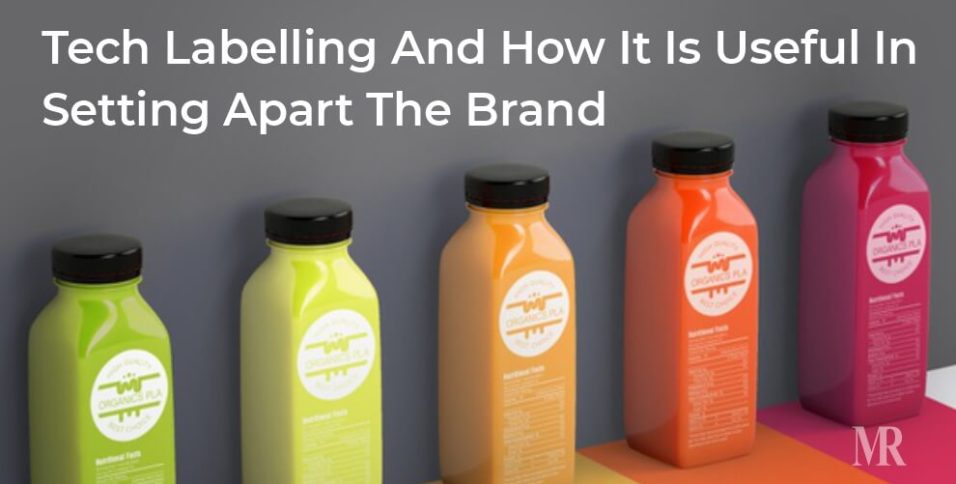The first known label to mankind emerged in the year 1700 in the form of handmade drawing on small medical containers. During the 18th-century, wineries put printed label on their bottles. These labels were printed on a homemade paper by a wooden press and then glued to the bottle of wine. After that, the labelling was used in different types of product. In 1935, self-adhesive label allowed this industry to grow rapidly. The first intelligent label appeared in 1970s as the technology evolved, it allowed use of electronic reading to put a large amount of information on the labels. The time has brought considerable change in the labelling sector. The market research done by the labels and labeling shows that the label printing market was standing strong at 34.46 billion USD until 2017. Labelling Market will grow at a rate of 2.8% per year. At this rate, it might reach 39.5 billion USD by 2022.
Importance of labelling as a marketing tool
The packaging is a very important part as it is used to identify a product and to differentiate one product from another. The labelling enhances the appearance of the product which is used for promoting. It also helps in providing information about a product to a prospective consumer. Companies use labelling as an extension to their brand. The label contains pictures, logos of the company which helps customer to recognise the brand. The products’ label delivers a specific message about the product to the consumer. It explains the benefit of the product of the competitors. The labelling has to follow certain rules and guidelines to get final approval before it gets printed on the packaging of the product. Companies have to abide by the mandatory consumer product information standards under the CCA, Food standards code if the company is involved in the food industry. It is very important now a day as labelling is quite significant in grabbing attention of the customer. It encourages potential buyers to purchase the product and it also provides all the information related to consumer. These techniques can be used get the product appeal more than the products from the same categories.
Next-gen labelling techniques used to bring change in the industry
The packaging industry is continually moving towards decreasing the weight of the product by using switching to flexible plastic format. Though labels do not significantly add to the weight of the product, still the manufacturers are using smaller labels and thinner material to cut down the weight. The improvement in material science has reduced the volume and thickness of label materials, but it does not compromise with the strength for handling and printing processes. The use of recyclable material in packaging is growing across the globe. The labels can affect the purity of the plastic which can make it unrecyclable. The purity of the recovered plastic granules will depend on how easily the adhesive can be removed. The development of new label adhesive has been introduced to make sure that the molecular bond is dissolved, resulting in high purity recyclable material. The demand for faster turnaround with greater customisation is driving the label printing industry. The big player in the industry are making heavy investment in high tech management information system, that is integrated with specialised inspection and colour performance software and technology and fully automated press and finishing line set up systems. The aim of this investment is to establish abilities that will be automated and streamlined workflow 24/7.
Thermal technology and its use in labelling
The thermal printing has a wide range of solutions for the companies who want to improve their packaging. The thermal printers are favoured due to their portability, speed, and capability to create high quality, vibrant labels which are sturdy and visually appealing. It is done by the implementation of thermal imaging technologies, which is available for different packaging solutions. The top-grade thermal printers are made to produce high volume printing in a rough environment. The strong equipment can print content including barcodes, texts and imagery on labels and tags at super-fast speeds round the clock. The printers can label items, package, shipping and many more.
Labelling strategy and how to approach it
Developing a clear and focused labelling plan is an important component of a branding strategy because labels and packaging are usually the first things consumers notice. Small businesses and start-ups tend to have fewer resources at their disposal making it harder for their product to compete with better-known brands. A well thought out label development plan can put a business’ limited resources to better use and help their label manufacturer have a deeper understanding of what is expected from them. Also, label development can lessen the chances of waste or error occurring during printing. Companies have to make through plan about the labels that are going to get printed on the container of the product. The mindfulness is necessary about the essence of the product before designing the label. It should bring out all the qualities of the product and put it in front of customers in a visually attractive manner.
Labelling plays a significant role in the success of a product, as market is full of commodities in the same bracket that targets similar group of consumers. It is important to look apart, cement products individuality and bring out the persona which is different from the others. The technologies and strategies are in place to bring the necessary changes in the labelling industry. But it comes down to the intent and the creativity of an organisation to push the ides through innovative labelling on the product.





